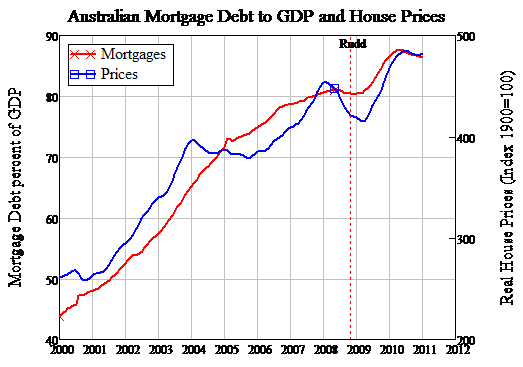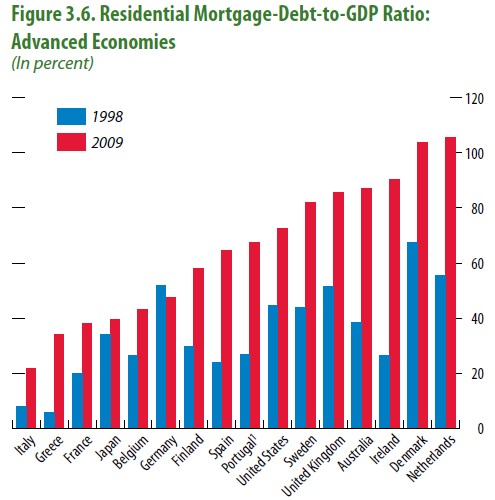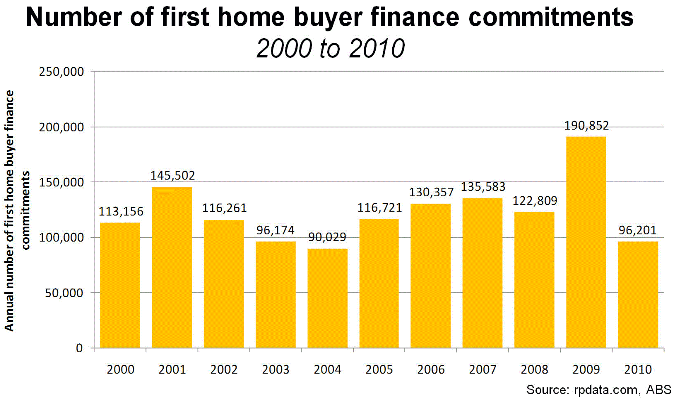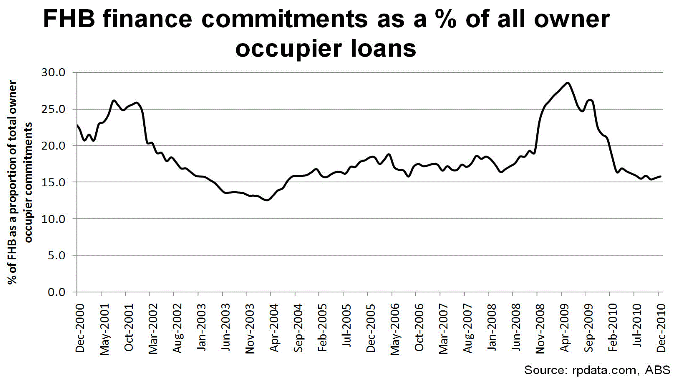
In today’s SQM Research weekly newsletter, SQM’s Managing Director, Louis Christopher, provides a sobering assessment of the state of Australia’s housing market. Below are the key extracts, together with some charts and data added for additional context.
“The housing market’s downturn is now happening at pace and there is no imminent recovery in sight. These may appear to be some very bleak words, however it is important that the facts are acknowledged so one can make better decisions for the future.
Stock for sale levels are now approaching the 2008 highs, housing finance commitments are at ten year lows (though there is likely to be a statistical rebound next month), house prices on every measure are recording falls for most capital cities, and as we reported here a little while ago, those holiday regions are being smashed due to an oversupply of real estate, a deterioration in their local demographics and of course, a rise in the Australian dollar.
Why is the downturn happening nationally? The answer is simple. We have a housing market that has a very high level of housing debt behind it. A highly geared housing market is highly susceptible to the price of debt. And the more geared we become, the lower the price of debt has to be in order for the market to keep above water. Even the RBA lifting the cash rate to just 4.75%, that price is now just too high for many home owners and would be home owners.
Indeed, the explosion of mortgage debt in Australia over the past decade has been phenomenal, having risen from around 45% of GDP in 2000 to around 85% of GDP currently (see below chart from Steve Keen).

Not only is Australian mortgage debt high by international standards, but the rise in mortgage debt has also exceeded most other developed nations (see below IMF chart):

Anyway, back to the article.
Add to this mix- bad government policy that gave the market a drug induced like hit in 2009 and now a subsequent withdrawal feeling in 2010. Remember, there are only a limited number of would be home buyers at any point in time and if you bring them all into the market at once, there is going to be very few left for a while afterwards.
The “drug induced like hit” Mr Christopher is referring to is the First Home Buyers’ Bonus (FHBB) provided temporarily by the Rudd Government in the wake of the GFC, which led to the highest proportion of first home buyers since the Australian Bureau of Statistics began keeping records in 1991.
The impact of the FHBB is clearly evident by the below RP Data charts, which show a surge of first home buyer commitments in 2009 and a subsequent collapse in 2010 as demand was brought forward.
First, consider the number of first home buyer finance commitments:

Now, consider the percentage of first home buyer commitments:

Again, back to the SQM article.
I still do not believe this is going to be the big one- that being the big 40% house price crash. However for many vendors, it’s certainly going to feel like it, given that the downturn is building momentum somewhere between a 5-10% decline (as an average for the capital cities), with Brisbane, Perth and Darwin potentially falling more. Sydney is likely to experience just a moderate downturn given its genuine shortage of rental accommodation and a stronger local economy.
The question is that if a 5-10% decline is already in the bag then what will be the limit to this downturn? Probably not much more than that. I fail to see how one can have a 40% decline when AT THIS TIME we have near full employment, we have a central bank that has plenty of room to cut interest rates and we have both sides of the government who have both publicly stated that they don’t want a housing crash and have the means to stop one. On top of this we have nominal GDP running at 9% and in a number of cities we have a very tight rental market as our vacancy rates illustrate.
However, there is an outside probability that future economic events can turn very negative while the Australian housing market is currently vulnerable, that would then potentially turn a 5-10% decline into something much greater. These events would have to include a major downturn in China and/or a sudden rationing of housing credit from some type of GFC II. Any sustained rationing of credit (through say fierce reduction in maximum LVRs) or major ongoing reductions in resources incomes would smash our national housing market and make it difficult for an effective stimulus response from the powers at be.
Yes that is a possible future outcome, however as stated above, we believe the most likely end game for this downturn is federal government and/or central bank intervention as what happened in 2008. The timing though is not likely to be soon. Indeed, the central bank is quite likely enjoying the housing price falls as it means the housing market is slowly deleveraging itself in a controlled way during a time of prosperity.
And that is why this downturn is now happening at pace with no imminent recovery in sight.”
Wise words from one of Australia’s few truly independent property advisors.
Cheers Leith

